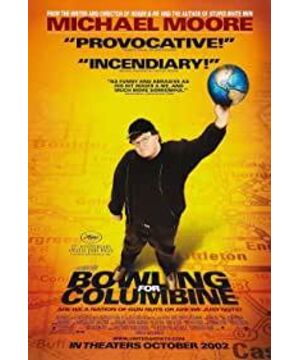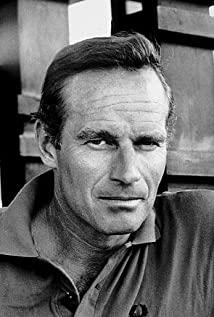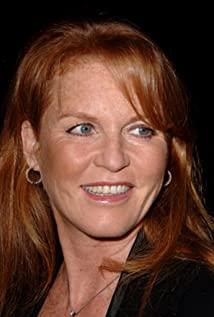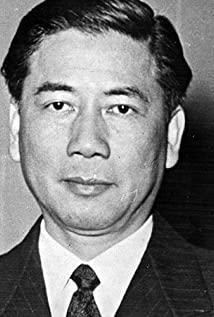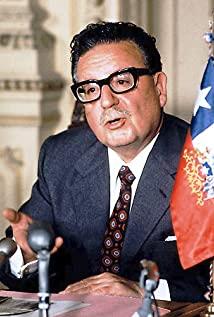I found Michael Moore's Bowling for Columbine. In exploring the causes and consequences of school shootings, Moore explored the following questions:
1. Is gun ownership and use a natural human right? Is it the so-called "traditional American culture"?
2. Why does the United States have the highest gun homicide rate in the developed world?
3. If people own guns to defend their homes, who are they defending? Who scares them?
4. What role do money and capital play in the matrix of gun prohibition and gun management?
The exploration and answer to the second question is the most brilliant. Moore cleverly compared social safety and gun homicide rates in neighboring Canada. He asked a good question, why is the probability of gun fatalities much lower in Canada, where gun ownership is not low, than in the United States? If it is said that this is because the United States has been a bloody country in history (the best shield used by the chairman of the American Gun Association to resist Moore's series of pointed questions), why are other Western countries that are also full of violence and blood, such as Germany, Britain, Its gun homicide rate is significantly lower than that of the United States? If it is said that this is the traditional culture of the United States, why can't such a culture be eliminated? Is a country with such a culture a heaven on earth or a hell on earth? Moore's lens made me see a far from safe America, aggressive, waging unjust wars in many countries around the world, but constantly inciting the fears of ordinary white people in the country through racial discrimination and terrorism, reaching some ulterior motives political and economic goals. Gun ownership is closely tied to the expansion of American hegemony around the world, the huge profits of arms manufacturers, the survival tactics of the mass communication industry, and issues of race, poverty, and more. This is not an issue that can be easily passed on with the excuses of so-called "traditional culture", "protecting one's family and self-defense", "tragedy that happened to happen", etc. Moore does not give a qualitative conclusion to each aspect, he just presents these interlocking links, allowing the audience to judge and think for themselves.
The most exciting scene was, of course, Moore's face-to-face conversation with NRA President Chalton Heston. Moore claimed to be a member of the NRA (this old boy really has a membership card!), and only got the opportunity to interview with Heston. Moore from the beginning is not humble or arrogant to the last question, until Heston asks Heston to apologize to the families of the victims of Columbine and Flint, as well as the anti-gun people, peeling off the old guy's painting layer by layer. Heston finally couldn't bear his old face and walked away rudely. Moore pulled out a photo of the victim in the gun murder of a six-year-old boy in Flint, and Heston ignored it. This is a war without gunpowder smoke, Moore planted the red flag of victory in the hearts of every discerning audience.
Looking back at the shooting in Seattle, the news reports ignore the murderer's family background, upbringing and living conditions, but describe the scene and process of the murder at length, making it impossible to know the cause and effect of the incident, and it is suspected of hype. The killer is said to be a mentally ill patient with a history of many years. But if that's the case, why is he acting unaccompanied? How could he easily steal guns and ammunition from someone else's house if guns should be kept properly? All the fatal shootings took place in the same neighborhood, did he choose to kill? ...
and this isn't the only gunshot massacre that has happened in Seattle these days. The capital Hill shooting that killed seven people two years ago is still lingering.
Writing this, I suddenly felt a chill in my back. Just like the Titanic, which thought it was extremely safe while driving on the vast sea, suddenly saw a huge iceberg appear in the line of sight.
Supplement: Moore's documentary has a shortcoming, that is, it fails to dig into the growth process and living environment of the two murderers of Columbine. Moore put a lot of energy into reflecting the neglect of schooling, the unfriendly teaching environment and other structural factors, and skipped the two children's family and their inner world. This may be limited by the type of documentary. For example, the murderer's parents and relatives refused to be interviewed, and the victim's family also refused to re-open the scars. Moore simply inserted archival images to reflect the inconsistency between the victim's side and the American Firearms Association at the time.
To complement Moore in this respect is Gus Van Sant's Elephant. This film, based on the Columbine school shooting, won the Cannes Palme d'Or and the best director for no reason. It's walking down from the moral high ground like Moore, lowering itself to the eye level of an average high school kid, to observe and peek into the cause and effect of the shooting. This eye level is exactly where Gus Van sant is brilliant at Moore. It is like a skillful hand, carefully peeling off the egg yolk of the campus from all external structural factors and other eggshell fragments, and then using a magnifying glass to carefully peel off the eggshell fragments. Take a look inside the campus. And the campus after this treatment looks so bland and unremarkable. Children in their youthful budding stage still have unresolved childishness on their faces, playing video games, skipping classes, being late, falling in love, practicing piano, hiding among classmates discrimination and conflict of all kinds. Such a campus may not be much different from any other campus, but who knows, with the accompaniment of Beethoven's Moonlight Sonata like water, such a human tragedy will be staged? Gus Van Sant's lens also reaches out to the families of the two murderers. We see how their parents are indifferent to them and let themselves be, and how the two children's hearts are twisted and grown with the fruits of sin. Finally, all the contradictions covered by the dullness gathered together and broke out uncontrollably...
There is another movie that I think can also be included in the category of school violence, which is "The Royal Battle". Although in the end the students were forced to kill each other by the military and the education sector, it seemed that they had no choice, but they actually had a choice. That choice was suicide, and they would rather lose their lives than contaminate the same kind under such sinful circumstances. blood. But the vast majority of them still chose to participate in this cruel "examination." When people were forced to kill if they didn't kill, the evil in human nature erupted with a thousand times the force of normality. . It is particularly worth noting that the various frictions between students in daily campus life were greatly stimulated in this extraordinary situation and became the fuse for many murders. In other words, the hatred, discord and conflict hidden in the campus have become the accomplices of this inhuman farce. The unreasonableness of the system is certainly the source of evil, and the fire of hatred and revenge in people's hearts is not the source of evil?
View more about Bowling for Columbine reviews


